The Spanish Meteor and Fireball Network (SPMN) is an interdisciplinary research project
leaded from CSIC and integrated by the following professional researchers:
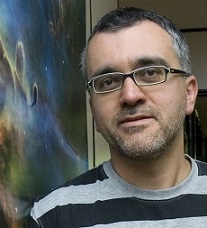 Ph.D. Josep M.
Trigo-Rodriguez
Astrophysicist born in Valencia in 1970, nowadays is Principal Investigator of the Meteorites, Minor Bodies and Planetary Science Group at the
Institute of Space Sciences (CSIC) and the
Institut d'Estudis Espacials de Catalunya (IEEC) at Barcelona.
He was postdoc researcher at the Institute of Geophysics & Planetary Physics of the University of California Los Angeles (UCLA) and member of the UCLA NASA Astrobiology Center between 2003 and 2005. From 1999 to 2003 was assistant professor in the Departament of Experimental Sciences of the Universitat Jaume I (Castellon, Spain) where gave Applied Physics and Thermodynamics. In his doctoral thesis (Dr. Juan Fabregat, Univ. Valencia and Dr. Jordi Llorca Univ. Barcelona, supervisors) was working with Dr. Jiri Borovicka on determination of meteoroid orbits and fireball spectroscopy at the Ondrejov Observatory (Czech Republic). His research interests are centered in the link between the Solar System minor bodies (comets, asteroids and meteoroids) and its importance to analyse the born of our planetary system.
During two years developed his minor thesis on the dynamic of Jupiter atmosphere (analysing the movement of Great Red Spot)under the supervision of Dr. Agustín Sánchez Lavega (Univ. País Vasco). In 1988 he was co-foundator of the
"Sociedad de Observadores de Meteoros y Cometas (SOMYCE)" and the International Meteor Organization (IMO). He has published
hundreds of science popularization articles in LE MONDE, MUNDO CIENTÍFICO, Astronomía, Newton, etc... Between 1991 and 2003 taught astronomy and developed new
programs of planetarium in the "Planetari de Castelló". He has published ten books,
some of them refered to minor bodies like e.g. "Meteoroids: fragments of comets and asteroids" (1996) and "The origin of the Solar System" (2000).
His research has been published in peer-reviewed journals like e.g. Astronomy & Astrophysics, Geophysical Research Letters,
Icarus, Meteoritics and Planetary Science, Monthly Notices of the Royal Astronomical Society, Nature Astronomy, Planetary & Space Science, Science, etc... He is founding member of the Spanish Fireball Network, and current coordinator of the fireball monitoring.
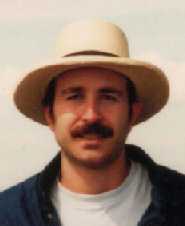 Ch.D. Jordi Llorca Pique
Chemist, he is professor of the Institut de Tècniques Energètiques
of the Universitat Politècnica de Catalunya (UPC). From 1992 to 2005 was professor of the Departament of Inorganic Chemistry at the
"Universitat de Barcelona", where he obtained his Ph.D. in 1995. Winner of the 1990 award
of the "Societat Catalana de Química" with the work entitled "Analysis of cosmic
dust in the laboratory". He has been researcher at the "Institut de Ciencia de
Materials" (CSIC, Spain) and at the Institute of Meteoritics (USA),
and invited professor at the "Institute de Recherches sur la Catalyse"
(CNRS, France) and at the "Dipartimento di Scienze e Tecnologie Chimiche" of the
Università di Udine (Italy). His research lines includes the study of primitive
meteorites (carbonaceous chondritres) and interplanetary dust particles (IDPs),
as well as studies concerning catalitic processes in heterogeneus phase that happened
in the Solar Nebula between the gas and dust 4,600 My ago. These processes lead to the
syntesis of organic molecules in the early Solar System. He is author of two books in Spanish
on meteorites: "Los meteoritos: Qué son y para qué
sirven", published in 1995 and "Meteoritos y cráteres" in 2004. Distinguished scientific popularizer, has imparted several
conferences and written numerous articles. His recent research has been published in
Meteoritics & Planetary Science, Physics and Chemistry of the Earth, Journal of Catalysis,
etc. He is founding member of the Spanish Fireball Network.
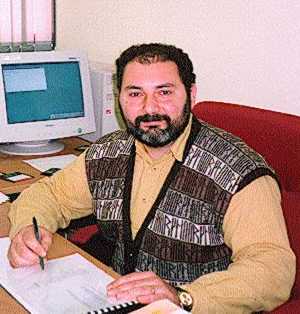 Ph.D. Juan Fabregat Llueca
Astrophysicist born in Valencia in 1961, from 1991 is professor of
the Astronomy & Astrophysics Departament at the "Universitat de Valencia".
His mean research lines are the nature and physical parameters of stars Be,
the development of circumstellar disks models around binary stars Be/X,
the study of young stellar clusters, stellar evolution and Stromgren photometry uvby y H-beta.
Dr. Fabregat has published two books and more of fifty research articles
in international issues as: Astronomy & Astrophysics, Astrophysics and Space Science, The
Astrophysical Journal o Monthly Notices of the Royal Astronomical Society. His interest in
the meteoric field is in fireball spectroscopy, specially how determine from light intensities the
chemical abundances in the ionized plasma. He is founding member of the Spanish Fireball Network.
 Ph.D. Jaime Zamorano
Physicist (master in Astrophysics) born in Algeciras obtained his Ph.D. in Astrophysics in 1985 by Universidad
Complutense de Madrid (UCM). He has been linked to UCM since then and he is staff Professor since 1988 at
Dept of Astrophysics and Atmospheric Sciences. He currently is Vicedean of the Physics building. He belongs
to the Editor Board of the Bulletin of Sociedad Española de Astronomía (SEA) and he is founding member of
Agrupación Astronómica de Madrid (AAM). Observer with a vast experience, he carried out dozens of observational
campaings. During an observing run at Calar Alto observatory with the 2.2m telescope he record the spectrum of a
bright fireball while observing a galaxy. The fireball spectrum was analysed by Dr. Jiri Borovicka (Ondrejov Observatory)
who estimated the relative chemical abundances of the progenitor meteoroid. His research interest is focused to
star-forming galaxies in which the activity star formation is high. His group is carrying out wide field surveys
for finding and analysing this kind of galaxies. He has supervised seven Ph.D thesis up to now. During the last years
some of his undergraduate students have been developing cheap wide field cameras for sky monitoring and sky
brightness measure. He is promoting the use of these cameras to detect fireballs since there is a paucity of
stations at Comunidad de Madrid and the center of the Iberian peninsula. He belongs to the Spanish Fireball Network since 2008.
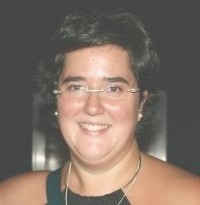 Dr. Mar Tapia
Geophysicist specialized in Seismology and Seismic Sata Processing, currently very interested in applying these techniques to the study of large bolides
interacting with the atmosphere. At present, she is researcher at the Laboratori d’Estudis Geofísics Eduard Fontseré (LEGEF)
at Institut d’Estudis Catalans (IEC, Barcelona, Spain). She finished her Physics degree at the University of Barcelona in 2002. From 2002 to 2006, she
was Ph. D. student at Universitat Politècnica de Catalunya (UPC) and Institut Geològic de Catalunya (IGC), also participating at two European projects
(Euroseisrisk y Isard). In her thesis
developed advanced methods to characterize seismic ground motion at regional and local scale (similar effects are common in signals produced
by big bolides), and in modelling those effects to study seismic events locally in order to better understand seismic riscs.
In 2005 she obtained a Pre-doc, EU Marie Curie fellowship contract, SPACE,
a Marie Curie Training Network, at Comenius University, Bratislava (Slovakia) into the researcher P.Moczo group to work in computational seismology.
She has also participated in several campaigns to obtain seismic data to study seismic hazard (Greece, Cerdanya catalan valley).
The year 2007, she participated in the Neries project, Network of Research Infrastructures for
European Seismology into the working group dedicated to the improvement of the accelerometric data dissemination in Europe.
From the end of 2007 and 2009, she worked as researcher and scientific technician at Institut de Ciencias del Mar - CSIC, into the
Barcelona Center for Subsurface Imaging
in the framework of the Kaleidoscope project
(Repsol and Barcelona Supercomputing Center partners) about obtaining subsurface seismic images from seismic data using inversion techniques and data
processing. She belongs to the Spanish Fireball Network since 2010.
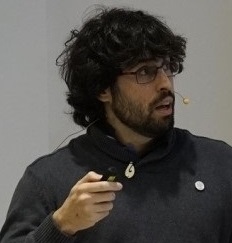 Dr. Manuel Moreno Ibáñez
Born (1983) and raised in Madrid, he graduated from the Technical University of Madrid (UPM) in Aeronautical Engineering in 2008. Later on, he expanded his studies learning scientific skills in a Master in Astrophysics, which was co-jointly taught by the Autonomous (UAM) and Complutense Universities (UCM) of Madrid. He presented his small thesis in 2011. Some years later (2018) he obtained his PhD. in Physics (Astrophysics) from the Autonomous University of Barcelona (UAB). Throughout these years he worked as a CSIC hired researcher at the
Meteorites, Minor Bodies and Planetary Science Group of the Institute of Space Sciences (CSIC-IEEC, Barcelona) . Nowadays, the collaboration with this group is still ongoing. He was also temporaly hired by the Finnish Geospatial Research Institute in Helsinki. His publications show his vivid interests in building up synergies with other national or international research groups or scientists. His research interests focus on the impact of meteoroids and asteroids with the Earth, as well the orbital evolution and meteor shower events associated with the outgassing of cometary bodies. This includes meteor observation, atmospheric and pre-atmospheric flight trajectory modelling and simulations, and the impact hazard that these event may cause to our planet or to other solar system bodies. He has not only published several papers on these subjects, but he has also participated into several outreach publications and he has been involved in the development of outreach events. He currently develops his main duties as an spacecraft systems engineer at Aistech Space. He has remarkable experience (4 years) designing, integrating and operation nanosatellites. He joined the Spanish Meteor Network in 2020.
 Dr. Jordi Ibáñez Insa
Physicist born in Barcelona (1973), he is ‘Cientáfico Titular’ of the Spanish Research Council (CSIC) at
Geosciences Barcelona (GEO3BCN-CSIC). He is currently the scientific head of the X-Ray Diffraction Service of GEO3BCN. He is specialized in the use of different analytical techniques, such as x-ray diffraction, Raman spectroscopy or optical techniques, for the study of materials. His main lines of research deal with the fundamental properties of solids (optical, structural, vibrational), from minerals to advanced materials, both at room conditions and at high hydrostatic pressures. In recent years, in close collaboration with Dr. Josep Ma Trigo-Rodríguez of ICE-CSIC, his lines of research have approached the field of planetary materials and meteoritics. His interest in this field focuses, among others, on the mineralogy of meteorites, on the study of the mechanical and compression properties of minerals in highly-shocked meteorites, and on the application of spectroscopic techniques to study meteorites, fireballs and their possible parent bodies. He is the author or co-author of more than 120 articles in international journals on physics, chemistry, mineralogy or geology.
|




